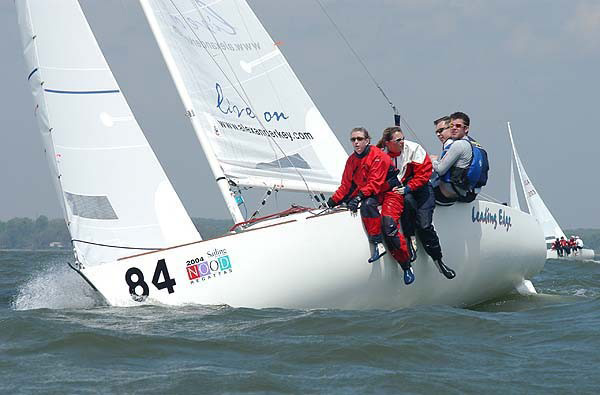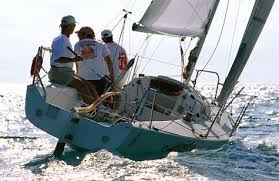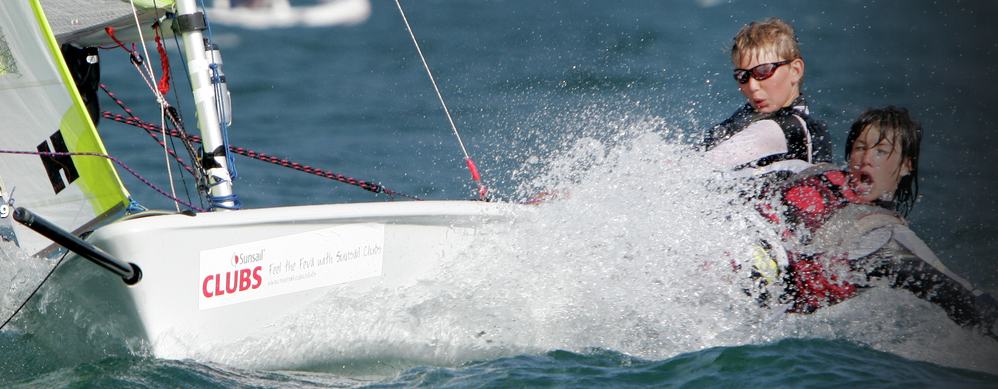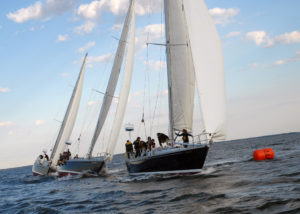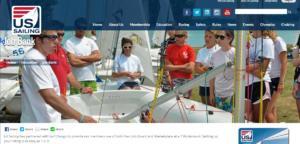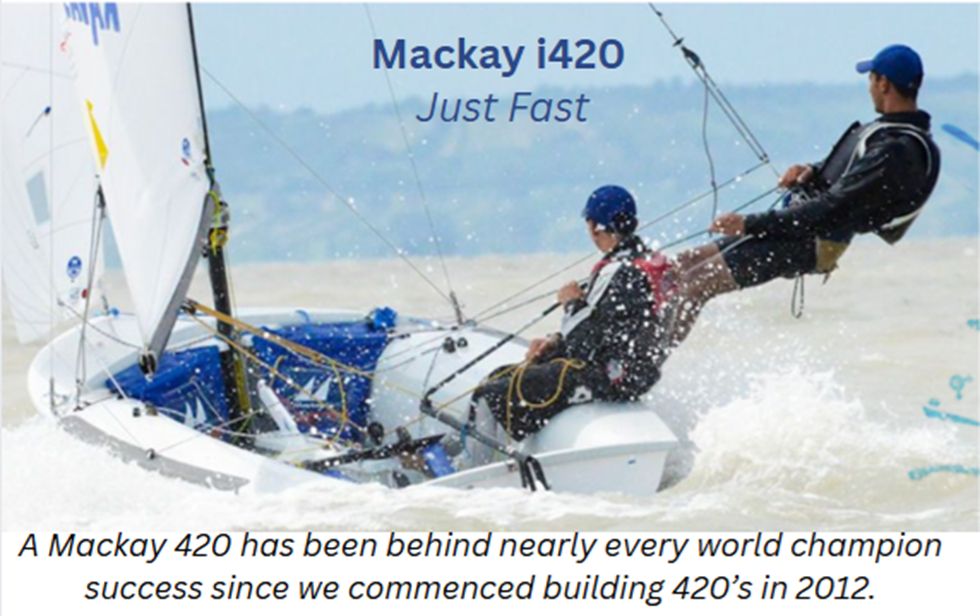Dallas, TX, March. 2, -Layline re-invents itself and, launches a new online platform to provide a better service to all one design and, performance oriented sailors.
The changes may not be visible to customers but, it changes the way the store runs, how it displays products and, other tools aimed to enhance the visitor experience. The new management has worked to re-build what and how Layline delivers, while staying true to what the original founder first envisioned, when he created this company.
Recently acquired by a large sailing group, Layline’s new management and marketing team are committed to bringing the brand back to its old glory and, become once again the place where dinghy sailors, beach cat aficionados and, racers find the right parts for their sailboats and, best sailing gear for each wind and, water condition.
An experienced group of sailors will be leading the technical support area and, they are eager to talk with you about your racing program or any sailing needs you may have.
Visit: www.layline.com
About Layline
Founded in Oct. 1986 by Walt Brown, Layline rapidly became the premier sailing store in the USA. It was known for their printed catalogs, full of one design specific products and, selection guides.
As times evolved and with the upraise of the internet , ownership changed hands a couple of times until recently. Layline assets were purchased by a large online marketing and, sailing company. The new ownership has over 14 years of experience with e-marketing and, are a team of lifetime sailors.
Today www.layline.com features a leading edge e-store and has been re-packed full of sailing knowledge, in addition to a second to none order processing department.
Stay tuned for new sponsorship and, strong presence by the Layline sailing and e-commerce team.
Blog
J/80 vs J/22: Which is Right For You?
The Johnstones have been a fixture in the sailing industry ever since the first J/24 came out of Rod’s garage in 1977. Since then, J-Boats has produced boats of every imaginable length and price point. While the venerable J/24 is the signature product of the company, two other boats in the mid-20’ range have risen to prominence as well, the J/22 and the J/80.
The Boats:
An international class, the J/22 has over 1600 hulls racing on three continents. It is widely regarded as one of the most successful one-design keelboats in the world. The J/22 is 22.5 feet long, 8 feet wide, draws nearly 4’ and weighs around 1800lbs. Sail plan is main, non-overlapping jib and large symmetrical spinnaker. Trailerable behind an SUV, the J/22 is easily rigged and launched at the local hoist. It sports a deck-stepped mast, laminate cored construction and lead ballasted fixed keel.
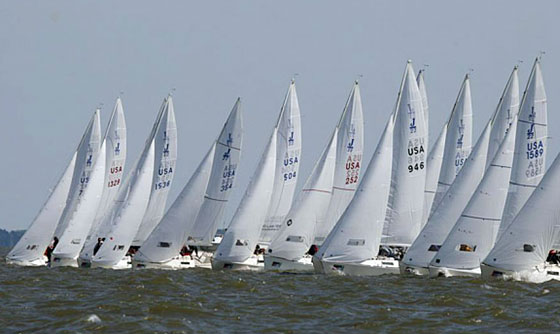
Designed in 1992, the J/80 is one of the best selling small keelboats in Europe and North America. There have been over 1300 J/80s produced and it is recognized as an international class by ISAF. The J/80 has a reputation for being a fast, safe boat with exceptional offshore capabilities. It comfortably planes in 15 knots of breeze and has the size to punch through big chop.
The J/80 is 26 feet long with a 8’3” beam, 4’11” draft and weighs 2900lbs. It sails with a main, non-overlapping headsail and asymmetrical spinnaker. It has a large clean cockpit, enclosed cabin with 4 bunks, and a fully retractable bowsprit.
Set up and Sailing:
The J/22 is a quick boat for its size and handles well upwind in most conditions. Rig adjustment plays a big part in the performance of the boat in racing situations. The two big adjustments are shroud tension and mast rake. Uppers are adjusted from the turnbuckle at the chain plate, making sure to also adjust the lowers accordingly. Mast rake is measured from the length of the forestay. A great tuning guide can be found from North Sails here (https://sail1design.com/wp-content/uploads/2015/03/north-j22-tuningguide.pdf).
Upwind the boat drives off the main; the 100% jib helps the boat point. Because it has a large, high aspect main, it is easy to depower in medium heavy breeze. Using the vang and mainsheet, it is easy to flatten the main and dump power. Crew placement is also important due to the relatively light hull weight. Using weight to keep the boat flat, as well as moving weight aft in chop helps drive through waves. Downwind the spinnaker should be full, continuously adjusted from both tack and clew. Pole height affects the spinnaker shape greatly and should be monitored.
J/80 mast rake is the most important tuning aspect for performance. Information on the best way to tune your J/80 can be found from North Sails right here (https://sail1design.com/wp-content/uploads/2015/03/north-j80-tuningguide-N01.pdf). Adjusting your intermediates and lowers will help mast sag and power upwind.
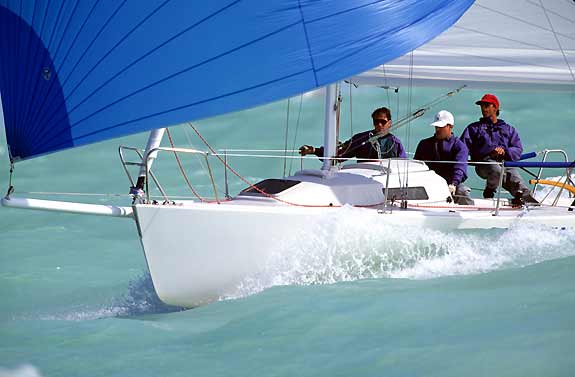
Which is right for me?
Both boats serve different purposes. The J/22 is an effective club racer for protected areas in medium air. It is regarded as very good racer and has served as principle match race championship boats. Appealing to a wide range of ages and ability levels, the J/22 is a very good day sailor.
The J/80 is an excellent buoy racer by any accounts. The ability to handle a very wide range of conditions allows the boat to excel in more locations than the J/22. Additionally, the J/80 performs well under handicap and can be easily sailed shorthanded. It is a stable platform without sacrificing performance and can even be overnighted. The J/80 is an exciting racer that can be enjoyed on an evening day sail with friends.
RS Feva
The most modern and unique small sailboat in the world. Young or old – simply great sailing. Amazing value and fun for adults and youth. World leading double-hander with a huge race circuit and recreational following across the globe – an International best seller!
The worlds best selling two-person sailboat in recent years, an ISAF International Class, winner of Dinghy of the Year in the USA, Coup de Coeurs in France, an RYA Recognised Junior class…the list of honours goes on and on. The RS Feva is the benchmark in small sailboats.
The best boat for youth racing post-Opti
One of the largest and fastest growing fleets in the World!
World leading double handed race boat – with cockpit space to allow young sailors or adults to love it.
The Feva XL is an International Class, selected by the International Sailing Federation (ISAF). There are fleets growing fast all around the globe, with training and club racing right up to World Championship competition.
“Lots of usage, great durability, terrific fun, major adrenalin rushes, good friends, brilliant value for money – What more could a family want?”
Bill Tucker – Feva Dad
Learn more: http://www.rssailing.com/us/explore/us-rs-feva
Fun for all – Young or old
- Big cockpit and high boom make the Feva really comfortable for youngsters and adults.
Single handed or crewed
- The Feva is the perfect size and has rig options that allow easy handling by one sailor, family crews or friends.
- High volume hull means it’s manageable for heavier crew
Novice to racer
- Combines stability with performance
- Confidence inspiring and very easy to sail…
- RS Feva is also the fastest of her type
- Full Class racing and training programmes
- Worldwide ISAF International Class
Short Handed Sailing Practice Sessions
By Andrew Kerr
The seemingly increasing demands of modern life on competitor’s time can make practice sessions very difficult to schedule with a full team – inevitably someone’s schedule does not work with the desired date.
For example: a team has a regatta at the club 7 days away on the schedule and a fully crewed practice session prior to the racing would be the best case scenario. Two of the team members can’t make it, and another has time constraints and can’t practice the full time, so what to do?
With this reality in mind, as a coach with a lot of different teams and fleets, I fully recognize the challenges that teams face regarding practice time and I have used a series of shorthanded drills that can maximize the benefits of the session while sailing shorthanded and with time limitations.
Here are three drills a team can do with a skeleton crew to get the most out of the time (there are many other drills a team can do depending on time and the number of crew available, we will look at these other drills in later articles):
These drills are at the corners of the course: 1) the start, 2) the windward mark rounding and 3) the leeward mark rounding, all areas where the team wants to be strong and ever improving and where there are big gains and losses to be had on the race course.
Each practice should be with one or two specific targeted goals in mind, the drills below are typically critical elements of a race that can be practiced shorthanded.
- For the start: Time and distance drill – goal is to be at full speed crossing the line at the buoy at the starting signal:
Pick a mark and sail away from it for 1 minute, estimate how long it is going to take to get back to the mark also including a tack, then tack when you feel it is the right time, sheet in and go and see how you do. Are you late, early, or just right passing the buoy at full speed right on the start? Particularly after a long winter break from sailing or with simply not many starting opportunities this is a skill to constantly polish and refine.
Very often teams are either late to the start or have set up too early and use the line up as a vehicle for burning off excessive time. Both result in poor starts and need to be eliminated as variables. Practice as many of these starts as you can. The result is instant feedback for evaluation and ease of set up with only one mark needed.
Dave Perry’s time and distance chart from his “understanding the Racing rules of Sailing” book is an outstanding tool I refer to all the time. Some key highlights: a) At 5 Knots of boat speed a boat will do 8.44 feet per second, therefore a 24 foot boat will take approximately 2.5 to 3 seconds to go one boat length, b) At 6 knots of boat speed a boat will travel 10 feet per second, so a 40 foot boat will take approximately 4 seconds to travel one boat length.
With this in mind as the team practices time and distance, a designated crew member (usually the tactician or a trimmer), can start to verbalize time from the line (including a tack) which can greatly help the team with orientation to the line and prevent either being too early or too late – an example would be “40 seconds to the line including a tack “.
The key element to emphasize on the final approach is slowing down early in the sequence rather than later. In coaching I have noticed that the more confidence a team has practicing this, the better their starts.
During this drill take every opportunity to practice and gauge lay line approaches to the mark.
Judging lay lines is an ongoing skill development because of the nature of our sport: different boats, different wind, sea, and current conditions.
Every approach to the mark can be an opportunity to pick a good lay line so that the team is not barging and thus not being dictated to by a leeward boat or unable to fetch the pin end of the starting line.
With the above drill, I have seen teams progressively make their starts more consistent. Instead of one good start followed by a bad one, the team has a series of good starts that enable them to play the tactical chess game in clear air and enact their game plan.
- Bonus practice – Round you’re practice starting mark like a windward mark with the Goal of doing it smoothly with minimum speed loss and best tactical positioning.
Take an opportunity to round the mark focusing on aiming half a length wide of the buoy and smoothly bearing away to appropriate angle for the velocity as well as fluidly easing out the mainsail.
In the team self-evaluation – how much speed did we lose?
If the rounding was done in good velocity did we end up too high out of the rounding and thus give up the inside to other boats?
If rounding in light air did we end up sailing too low and losing all of our momentum?
How did we judge the lay line to tack to the mark? Did we over stand? Was it too tight?
It is very noticeable when watching races from a coach boat how the top skippers round the marks smoothly with elongated smooth turns that maintain momentum and positioning while other teams round with an abrupt speed killing turns. Make it a goal to be the former team and not the latter!
- Leeward Mark rounding Drill:
Goal: Work on approach so that the team comes out of the mark rounding at top speed and as close to the mark on the back side of it as possible.
This is a really good one to do with no spinnaker for both repetition and evaluation after each rounding.
Did we come out of the rounding with speed? Try different approaches – both port and starboard rounding’s over and over again – coming in on starboard and having to jibe as an integral part of the rounding and working on making sure the mechanics of trimming in the mainsail fluidly and trimming the headsail in perfectly to the tell tales for all points of sail for max speed .
Coming in on port tack with either the ideal 1 and half lengths wide of the buoy – or “tactical rounding” approach or coming in for a “speed rounding” where the team is constrained by an outside boat and is simply owed mark room.
Team Evaluation:
In the evaluation process after each rounding the team can ask several questions – are we over trimming the headsail in relationship to the rate of turn and points of sail?
Are we pinching too much out of the rounding and losing speed? Are we right on the wind on the exit out of the mark? Were we tight on the backside of the mark on the exit of the rounding or did we concede distance to leeward?
A common error to watch for is often in light air the Mainsail is trimmed in too quickly for the rate of turn and the boat loses a lot of speed – watch for this one, the same can be observed for the headsail being brought in too quickly and pushing the bow away from the mark. Lot’s to be gleaned from this drill – boat handling, sail trim and spatial evaluation as well as review of the applicable rules.
Shorthanded? Not much time available? Your team is still set to practice and get the maximum out of it!
Sail1Design & US Sailing Form Partnership
Annapolis, MD – Sail1Design is pleased to be named the official job board/career center supplier, and Marketplace supplier, for US Sailing. We offer sailing’s #1 Career Center and Job Board, always chock full of incredible sailing job opportunities, from summer coaching positions to full-time, professional opportunities. Our comprehensive career center also offers job seekers the ability to create their own resume and web page, highlighting their experience and posting their resume. Likewise, employers can search our resume database to find the right match for that open position. Sail1Design is proud also to be the official job board of the Intercollegiate Sailing Association (ICSA), the US High School Sailing Association (ISSA), and now, US Sailing. US Sailing members will receive a discount on Career Center and Marketplace posts.
Unique to the industry, Sail1Design hosts and manages an active private, by-owner Marketplace, focusing on performance and one-design sailboats & gear. For all boats under 25′, our ads are free. What makes us different is that we also provide, side-by-side, professional brokerage services as well. We have had great success helping our sailing clients market and sell their boats, using our powerful client base, social media, and the brokerage industries multiple listing service to ensure your boat gets noticed.
more About Sail1Design
About US Sailing
US Sailing was originally organized as the North American Yacht Racing Union (NAYRU) on October 30, 1897. As the National Governing Body for the sport of sailing, US Sailing’s mission is to provide leadership for the sport of sailing in the United States. The organization works to achieve this mission through a wide range of programs and events, geared towards providing an equal level playing field for all sailors. US Sailing sets the course enabling sailors to enjoy the sport for a lifetime.
For first-time sailors, US Sailing ensures that they will learn from experienced and certified instructors who follow national guidelines and are trained using a nationwide curriculum. For sailing programs and one-design sailing organizations, US Sailing hosts networking events and symposiums that bring together experts who address the latest developments in these areas of the sport. Young sailors who are just starting out in the sport can learn about sailboat racing through one of many Junior Olympic sailing festivals organized by US Sailing every year.
For racing sailors, US Sailing provides an equal level playing field by training and certifying race officials, judges, and umpires and by ensuring standardized rules and sailing instructions. For sailboat owners who enjoy competing in offshore events, US Sailing provides rating certificates such as IRC and ORR to enable boats of various sizes to compete against each other. Safety on the water is an essential part of US Sailing’s training programs, including powerboat courses. US Sailing’s Safety at Sea Seminar is a course required by many offshore regatta organizers.
We host 16 National Championships at sailing organizations around the country. These championships offer various disciplines of racing so sailors can test their skill level at a national level. For sailors aiming to represent the USA at the Olympic and Paralympic Games, US Sailing trains, selects, and manages these great athletes.
US Sailing could not achieve its mission without the ongoing support of its members and volunteers. Our members have a shared passion for this lifelong sport.
– See more at: http://www.ussailing.org/about-us/#sthash.LPb8ednS.dpuf
What Great Sailing Coaches Do
All good coaches, regardless of their chosen sport, share some important fundamental qualities that transcend technical knowledge, or specific x’s & o’s. In other words, whether it’s a basketball, tennis, hockey, football, chess, or sailing coach, there are certain key characteristics to good coaching, and none of these really requires technical knowledge of the sport they are in.
See our Profiles in Pro Sailing: John Mollicone
Here are some of those characteristics: logistics, organization, energy, leadership, passion, creativity, patience, dedication, motivational skill, humility.
I would bet that you could take a good coach, put him or her in a new sport, and that coach would find some success. Think about the best coach you ever had, and visualize that person in another sport, and you might see just how that person could adapt and still be a difference-maker.
However, we all know that great coaches not only possess these core qualities, but indeed they are also masters of the subtleties, rules, and technical chess moves of the sport they are involved in. Very often, great coaches are former players themselves, and often they are good, but not necessarily great players. In any event, it seems virtually certain that actually having been in the arena at some level, having been a true game player, is a necessary ingredient for a great coach.
So then, what an important advantage sailing coaches have, since the sport allows lifelong top-level competitive opportunities. While it would be impossible for a middle-aged football coach to live, first-hand, what his players go through on the gridiron, middle-aged sailors and coaches can stay current, and can compete right alongside the world’s best sailors, and even win world championships in sailing. Opportunities exist in team racing, match racing, and all types of one-design classes offer regattas, year-round. In this manner, sailing coaches have the ability to get inside the sport, at the highest levels, learn more, and feel the same things that their players go through out on the race course. The empathy gained here is a very powerful tool that great coaches employ when coaching.
Getting into the rhythm of a sailboat race, realizing first-hand the excitement and frustrations of the sport, preparing mentally for each race, “knowing when to tack”, these are all things that coaches must be able to talk to their players about, and talking to them about these things is so much more clear and present when done by someone who is actually good at them, and has done them recently at a high level.
For example, it was always easy for me to say to a team, “make sure when you are in FJ’s at the starting line to allow yourself more leeward room to accelerate since the foils are small and the boats need to go bow down first before they start lifting.” It was really easy to say. It was quite another thing to actually do it, and to go out on the starting line, in FJ’s, and practice what I preached. That was a LOT harder, and I drew a great deal of empathy with my players from that situation and recognized better ways to talk about it and to talk them through it, having been there myself. This is especially true in team racing, where coaches can see plays easily on the coach boat or on the drawing board, but it’s one thing to talk about a mark trap at Mark 1; it’s another thing altogether to go out and be able to execute it. Without being, or having been, in the arena, sailing advice and technical coaching can be somewhat hollow compared to other sailing coaches who know it first-hand and live what they coach.
So, when you look to your coaches for advice or to get to that next level, or if you are a interested in sailing in a college program, take a moment and check out the coaches resumes, just as they will most assuredly be checking yours. The list that makes coaches good coaches should be there for sure, but see if the coaches list how, or if, they stay current in their profession and have the passion to go out on the racecourse themselves. Great coaches usually always have a story, and very recent one, of a lesson learned at a regatta they sailed in themselves. They love to sail and get better, if only to become a better sailor and coach.
While there is a short list of coaches who choose to (and can) do it all, many top collegiate programs now share these coaching qualities by hiring an assistant or co-head coach, who is very often a recent college sailing alumnus and is active in dinghy racing and brings that empathy, right away, to the team. The head coach then ties everything together with experience, maturity, management, and knowledge of the game.
If you’ve ever noticed, baseball coaches actually suit up for games even though they certainly won’t be playing. This historically comes from the old “player-coach” model, and perhaps, this connects them with the game and the player more intimately. Sailing offers the unique ability for all ages to compete at the highest levels of the sport, and great sailing coaches take advantage of this, “suiting up” themselves and making themselves better at coaching by sailing competitively.



